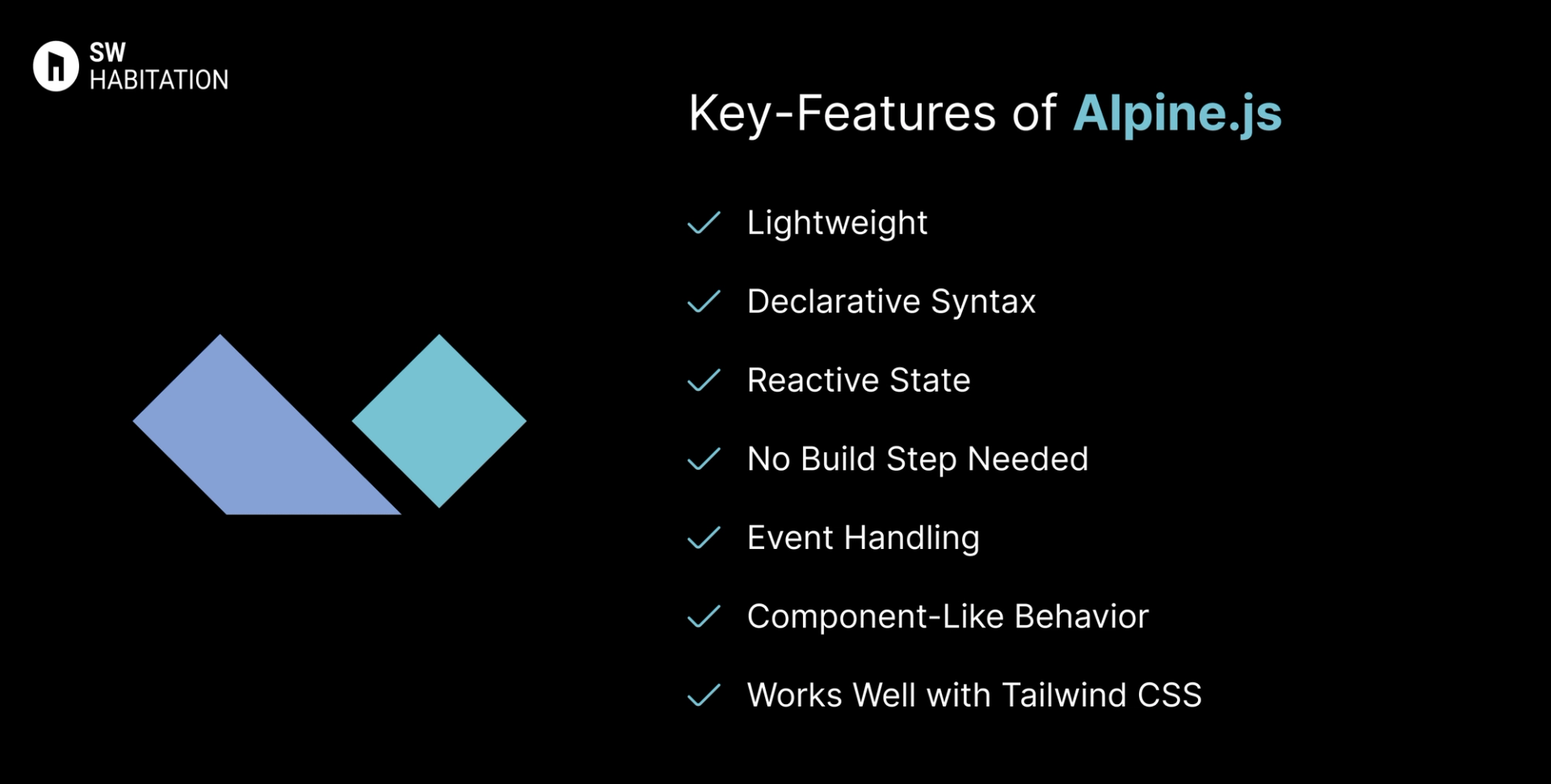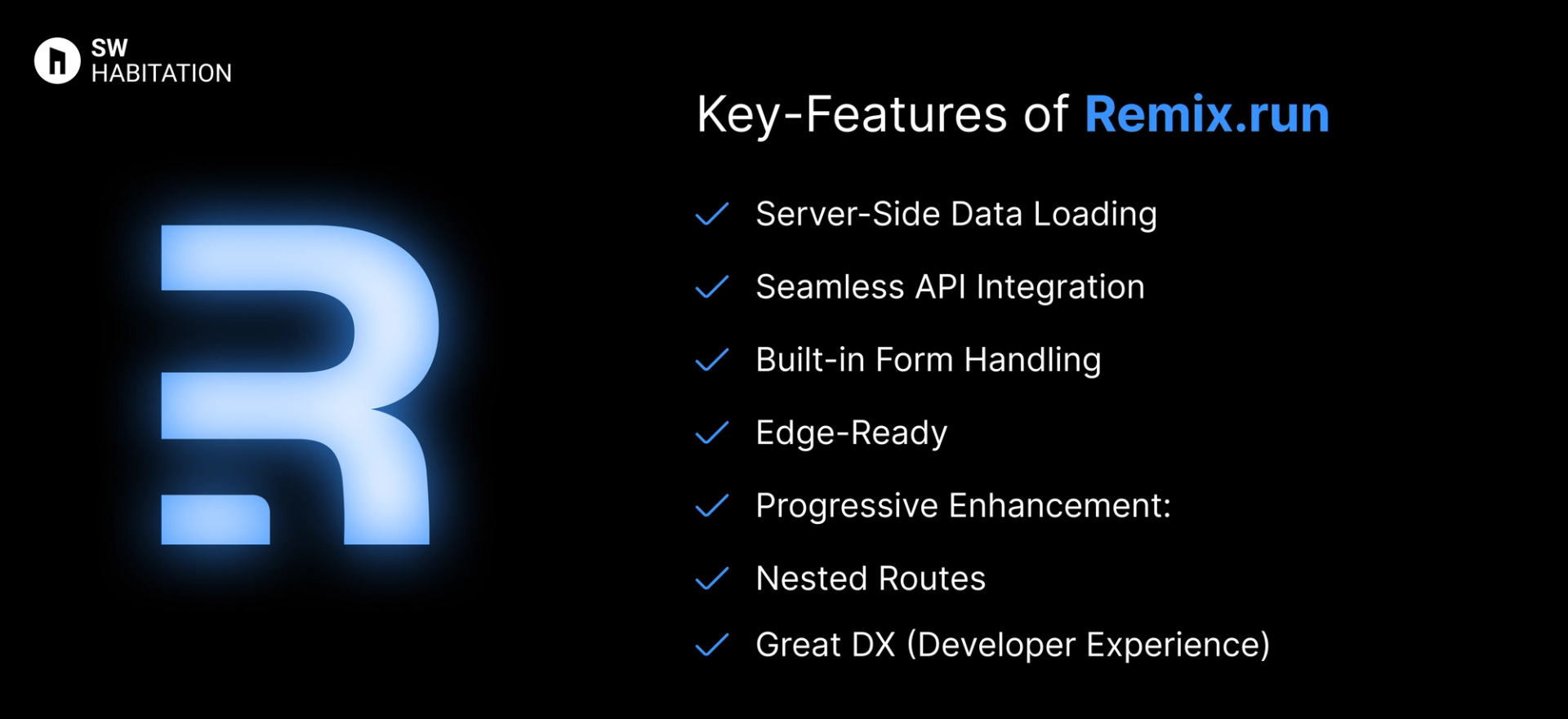Alpine JS vs. Remix

Alpine JS

Remix
So, you know when you want to build a website or app, but doing everything from scratch feels kinda overwhelming? That’s where web frameworks come in. They’re like a ready-made set of tools and building blocks that help you get things up and running way faster. Instead of figuring out every little piece yourself, a framework gives you a solid base to build on, and lets you focus on making something cool.
What is Alpine.js?
Alpine.js is a lightweight JavaScript framework that gives you the power of modern reactive frameworks like Vue or React, but with a syntax and feel closer to HTML attributes. Often called the Tailwind for JavaScript, Alpine is designed for adding interactivity to static HTML without a heavy build process or complex tooling.
It’s perfect for developers who want to sprinkle dynamic behavior on otherwise static websites without pulling in a big framework.
Key Features of Alpine.js


- Lightweight: Just ~10kb gzipped, super small and fast.
- Declarative Syntax: Works directly in HTML with x-data, x-show, x-bind, etc.
- Reactive State: Reactive data binding without a Virtual DOM.
- No Build Step Needed: Can be dropped into any project via a <script> tag.
- Event Handling: Easy event listeners with @click, @input, etc.
- Component-Like Behavior: Encapsulate logic inside HTML attributes.
- Works Well with Tailwind CSS: Often paired together for modern UI.
Advantages of Alpine.js
- Super Lightweight: No bundling needed, just drop a script.
- Easy to Learn: Simple, HTML-first syntax.
- Great for Sprinkles of Interactivity: Ideal for forms, dropdowns, modals.
- No Build Tools Required: Runs directly in the browser.
- Works with Any Backend: Add to Laravel, Rails, Django, or plain HTML.
Disadvantages of Alpine.js
- Not for Large Apps: Best for smaller interactive features, not full SPAs.
- Smaller Ecosystem: Limited compared to React/Vue.
- Less Advanced Tooling: No built-in SSR or complex routing.
- Smaller Community: Growing, but not as large as big frameworks.
What is Remix ?
Remix is a React-based full-stack framework that focuses on server-side rendering (SSR) and progressive enhancement. Unlike static site generators, Remix loads data on the server and sends only what’s needed to the browser, making apps feel lightning-fast. It’s built to optimize UX, performance, and accessibility while giving developers a structured and scalable way to build web applications.
Key Features of Remix


- Server-Side Data Loading: Fetch data on the server before sending it to the client, reducing unnecessary API calls.
- Seamless API Integration: Easily connect with any backend or database.
- Built-in Form Handling: No need for external libraries like React Query – Remix handles form submissions naturally.
- Edge-Ready: Works seamlessly on edge computing platforms like Vercel and Cloudflare Workers.
- Progressive Enhancement: Apps work even if JavaScript is disabled, ensuring a smooth user experience.
- Nested Routes: Create modular components that load only the data they need, improving performance.
- Great DX (Developer Experience): Simple routing, fast refresh, and minimal boilerplate.
Advantages of Remix.run
- Works with Any Backend: Remix doesn’t lock you into a specific database or API.
- Improved UX: Fine-tuned loading strategies create a smoother browsing experience.
- Scalable: Works for both small projects and enterprise-grade applications.
- Great SEO: Unlike SPAs, Remix ensures search engines can index content properly.
- Fast and Efficient: Server-side rendering optimizes performance and reduces unnecessary re-renders.
Disadvantages of Remix.run
- Hosting Considerations: Requires a backend environment (like Node.js), so it’s not ideal for purely static sites.
- Newer Ecosystem: Compared to Next.js, Remix has fewer third-party integrations.
- Learning Curve: If you’re used to client-side React apps, SSR might take some time to grasp.
Comparison Between Alpine JS vs Remix
Use Cases of Alpine JS
- UI Components: Modals, dropdowns, accordions, tooltips.
- Forms: Validations, dynamic fields, toggles.
- Blogs/Portfolios: Adding interactive behavior to static content.
- E-commerce: Lightweight cart toggles, filters, and menus.
- Legacy Projects: Add reactivity without rewriting the whole app.
Use Cases of Remix
- Interactive Dashboards: Efficient data fetching makes Remix ideal for real-time applications.
- E-commerce Sites: Fast data fetching and seamless UI interactions.
- Content-Rich Websites: Great SEO and progressive enhancement ensure content is always accessible.
- SaaS Applications: Server-rendered pages reduce loading times.
Other Resources
Conclusion
Web frameworks make building websites and apps a whole lot easier. Whether you’re working on a personal project or something big for work, they help with the heavy lifting—like routing, design structure, and how everything connects.
With support for things like server-side rendering, optimized performance, and developer-friendly features, these tools let you create faster, smarter, and cleaner websites. Just pick the one that fits your style, and start building something awesome 🚀
Frequently asked questions
Is Alpine.js like React or Vue?
Yes, but much lighter and HTML-first.
How big is Alpine.js?
~10kb gzipped.
Do I need a build step?
No, just add via <script> tag.
Can Alpine.js build full apps?
Not ideal — best for small interactions.
When should I use Alpine.js?
When you need lightweight interactivity on static or server-rendered sites.
Can I use Remix with my existing app?
Yes, absolutely Remix can be integrated into existing apps or used to build new ones. It works well with other tools and technologies, giving you flexibility.
Where can I host a Remix app?
You can host Remix apps anywhere that supports modern JavaScript and Node.js, like Vercel, Netlify, or traditional cloud platforms like AWS or Heroku.
How does Remix improve performance?
Remix focuses on delivering minimal JavaScript to the browser, using server-side rendering, and optimizing page loads. It also prioritizes fast data fetching and content delivery.
